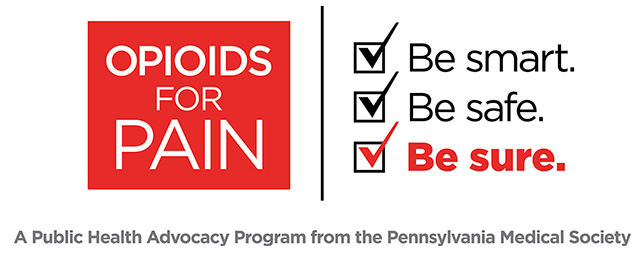Health Advisory
Babesiosis and Tickborne Rickettsial Infections in Philadelphia:
Healthcare Provider Recognition and Case Reporting
August 19, 2013
Summer marks the height of tick activity in Philadelphia and surrounding areas with corresponding seasonal increases in the incidence of tickborne infections. In addition to diagnosing and reporting Lyme disease, the most common tickborne disease in the City, the Philadelphia Department of Public Health (PDPH) encourages area healthcare providers to become familiar with other tickborne diseases that may occur among City resident—babesiosis, anaplasmosis, ehrlichiosis, and Rocky Mountain spotted fever (RMSF). These tickborne diseases cause acute febrile illness and need to be treated promptly to prevent complications and fatalities.
Your assistance with case identification and reporting increases understanding of the burden of illness from tickborne diseases in Philadelphia and helps direct prevention efforts. Please remember to report all suspected or confirmed cases of babesiosis, anaplasmosis, ehrlichiosis, RMSF, and Lyme disease (including clinically-diagnosed erythema migrans) within 5 days to PDPH by telephone at (215) 685-6748 or fax at (215) 238-6947.
Babesiosis
Babesiosis is a parasitic disease that is caused by the protozoa Babesia microti and transmitted by black-legged or deer ticks (Ixodes scapularis), which also transmit Lyme disease and anaplasmosis. Babesiosis can also be transmitted by blood transfusion from an infected donor. Surveillance data from neighboring states, particularly New York and New Jersey, have documented the emergence of this infection in recent years. Evidence now suggests that this pathogen has also emerged in Philadelphia, as an otherwise healthy City resident, with no travel history but extensive outdoor exposures in the City’s parks, was hospitalized with babesiosis this summer.
Signs and Symptoms: The incubation period is usually 1–3 weeks for tickborne transmission and up to several months for transfusion-related exposures. The clinical spectrum ranges from asymptomatic to severe and life threatening, especially for individuals who are asplenic, immunocompromised, or elderly. Symptomatic illness is characterized by fever and hemolytic anemia, similar to malaria. Chills, sweats, myalgia, arthralgia, headache, and nausea may also occur. Severe cases can be associated with marked thrombocytopenia, disseminated intravascular coagulation, hemodynamic instability, acute respiratory distress, myocardial infarction, renal failure, hepatic compromise, altered mental status, and death. Co-infection with Lyme disease may increase severity of both diseases.
Treatment: Symptomatic disease is treated with atovaquone and azithromycin for at least 7–10 days. Severe illness (parasitemia ≥10%, organ-system dysfunction) is treated with clindamycin and quinine.
Laboratory Confirmation:
-Evidence of intra-erythrocytic Babesia parasites during microscopic examination of blood smears. Contact PDPH at (215) 685-6742 to arrange for confirmatory blood smear examinations or specialized testing of whole blood using Polymerase Chain Reaction (PCR) methods.
-B. microti total Ig or IgG antibody titer of ≥1:256 by serologic indirect fluorescent antibody testing can support a diagnosis of Babesiosis but does not confirm infection.
Tickborne Rickettsial Infections
Anaplasmosis, ehrlichiosis, and RMSF are the most likely tickborne rickettsial infections to occur among Philadelphia residents. Of 12 tickborne rickettsial cases reported to PDPH in 2012, one-half spent time outdoors in Philadelphia, New Jersey, or other locations in Pennsylvania. Despite clinical similarities,these infections have distinct epidemiologic characteristics and etiologies (Table 1).
Omitted: Table 1. Epidemiologic Characteristics of Tickborne Rickettsial Infections
Signs and Symptoms: Most often, these bacterial infections cause fever with headache, malaise, myalgia, nausea, or blood abnormalities (thrombocytopenia, mild anemia, hepatic transaminase elevation). Those with RMSF are more likely to have a rash (80%–90% of cases), which may appear as maculopapular lesions 2–5 days after onset or petechiae on or after day 6. Rash is observed in up to 30% of patients with ehrlichiosis (up to 60% in children) and is rare in patients with anaplasmosis. RMSF can be rapidly fatal if treatment is not initiated within 5 days of onset. If not treated correctly, both anaplasmosis and ehrlichiosis can also cause serious illness and death.
Treatment: Doxycycline remains the first line of treatment for any patient regardless of age who is suspected to have anaplasmosis, ehrlichiosis, or RMSF. Rapid, empiric treatment with doxycycline is necessary to prevent fatal outcomes and should not be delayed while awaiting laboratory confirmation results. Dosage recommendations vary by age and course duration is a minimum of 5–7 days for ehrlichiosis and RMSF. Given the potential for Lyme disease co-infection, a longer duration (10–14 days) is used for anaplasmosis treatment. Unlike Lyme disease, antibiotic prophylaxis following a tick bite is not recommended as a means to prevent tickborne rickettsial infections.
Laboratory Confirmation: A 4-fold increase in organism-specific IgG antibody titers using immunofluorescence assay testing of paired sera is the gold standard for confirmation. Acute specimens should be collected during the first week of illness and convalescent specimens should be collected 2–4 weeks later. A single positive IgG antibody titer can support the diagnosis but not confirm infection. PDPH can be contacted at (215) 685-6742 to coordinate specialized PCR testing of whole blood for anaplasmosis and ehrlichiosis or rash biopsy for RMSF early in the course of illness.
Tick Bite Prevention
Between April and October, discuss the following prevention measures with your patients, especially those who work or are active outdoors:
-Use insect repellent with at least 20% DEET on exposed skin. Treat clothes for outdoor work or activities with permethrin or another EPA-registered repellent.
-Avoid wooded and bushy areas with high grass and walk in the center of park trails. Keep yards and areas around homes tended by mowing grass and removing brush and leaf litter regularly.
-Shower or bathe soon after being outdoors.
-Check for ticks daily. Attached ticks should be removed as soon as possible with tweezers by grabbing the tick as close as possible to the point of attachment and pulling in a straight, upward motion. The goal is to remove the entire tick including its mouthparts.
Resources for Healthcare Providers
-CDC’s Tickborne Diseases of the United States. A Reference Manual for Healthcare Providers. This recently published online handbook has detailed information on the epidemiology, clinical manifestations, diagnosis, and treatment of tickborne diseases found in our region and other areas of the United States: www.cdc.gov/lyme/resources/TickborneDiseases.pdf
-The Clinical Assessment, Treatment, and Prevention of Lyme Disease, Human Granulocytic Anaplasmosis, and Babesiosis: Clinical Practice Guidelines by the Infectious Diseases Society of America: http://cid.oxfordjournals.org/content/43/9/1089.full
-Diagnosis and Management of Tickborne Rickettsial Diseases: Rocky Mountain Spotted Fever, Ehrlichioses and Anaplasmosis – United States: http://www.cdc.gov/mmwr/preview/mmwrhtml/rr5504a1.htm
-To arrange for specialized laboratory testing for a suspected tickborne infection or schedule a brief educational in-service on Lyme disease, call Dana Perella, MPH, PDPH Vectorborne Disease Surveillance Coordinator at (215) 685-6742.




